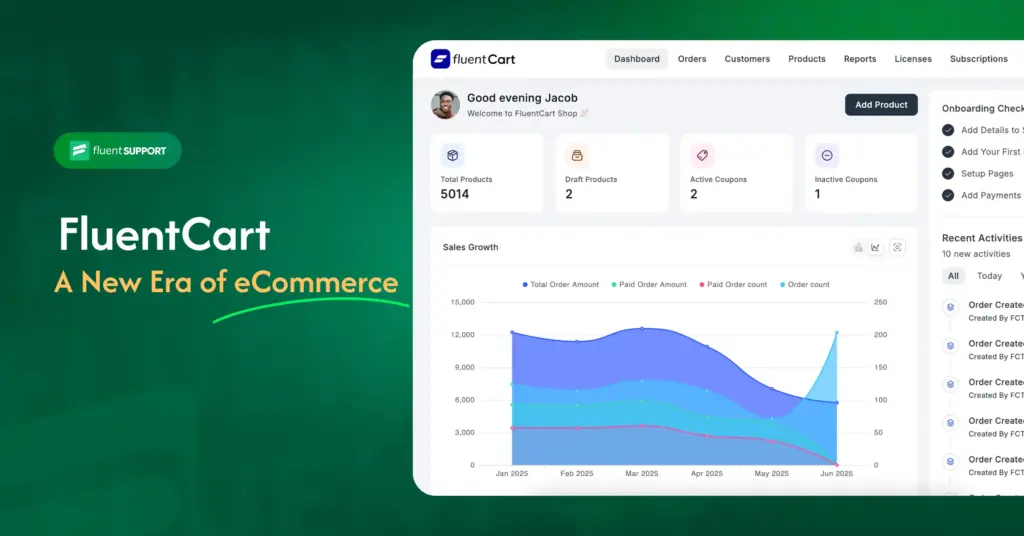
How to Negotiate with Customers: Know 5 Effective Strategies
A successful negotiation depends on your creativity and strategy. Again, the outcome of it mostly needs to be beneficial for both parties, like a win-win situation. You can define it as an art.
Suppose you have the creativity or confidence to be a good negotiator. But without strategy, you can’t advance on it. So, if you desire to shine as a good negotiator, you need to be strategic.
In this blog, we have discussed five strategies to negotiate with customers. Following these strategies, there’s a high chance you will move forward to unique solutions.
Let’s start off!
1. Active listening
Usually, most people only remember about 17-25% of the things they listen to. But when you are negotiating with your customers, you can’t take these statistics into account. Every detail is crucial when you are interacting for negotiation. You can’t afford to miss any of them.
What’s the action plan for it?
All you have to do is cultivate active listening skills.
In the customer support industry, this skill has widespread usage. This tactic will help you understand more deeply what your customers are trying to say. So, it will be easy for you to know their needs, pain points, and concerns.
Moreover, this unique communication technique can have a positive impact on your whole negotiation process. When you are fully focused or concentrated on what your customers are trying to say, they will feel heard and more valued by this activity.
Plus, this will definitely enhance the quality of your overall conversation and result in improved sales. You will be amazed to know that active listening alone can improve sales performance by 8%.
Let’s know how you can leverage this skill in a more efficient way.
- Throughout the conversation, keep your curiosity up.
- Turn your whole body to address them. Sit upright and make good eye contact.
- When a customer finishes speaking, it’s your time to start repeating what they said in a more modified way and with a troubleshooting attitude.
- Don’t repeat the statement word for word.
- Pay attention to their tone of voice and body language to learn more deeply about their perspective and their thoughts about the product.
- Let the customer speak without interrupting.
- Smiling and blinking throughout the conversation, occasionally add “I understand,” “Indeed,” “yeah!” etc.
A big mistake many customer service agents make is taking notes or planning out what they are going to say after the conversation while it is running. Doing so will result in distraction.
Put your opinions, your ideas, and your suggestions out of the way and listen to them. When they stop speaking, you will have time to pause and prepare your responses. Don’t make notes in between their talking. It will both distract your customers and your attention.
2. Ask questions
You are off track with your approach if you aren’t asking enough questions to your customers. To uncover a variety of information and clear up misunderstandings, be consistent in asking questions.
Plus, there is a high chance to hit the right point and gain insights into what actually bothers your customers. According to it, you can better frame your negotiation and make an ideal decision.
So be fluent in asking question to make a better outcome from your negotiation. An extra perk of this activitiy is it makes the negotiation more interactive. Your customers realize that you’re interested to know about their perspective.
Let’s overview what types of questions you can generally ask to uncover insights.
- open-ended question
- close-ended question
- clarifying question
- summarizing question
and so on. Your question will vary depending on the situation and what types of information you are trying to uncover.
Start asking questions after you fully listen to your customers concerns. Don’t interrupt while they are expressing.
3. Good tone of voice
Positive body language and eye contact are crucial when negotiating in a face-to-face interaction. But what’s more important is maintaining a good tone of voice. Also, if you are in verbal communication.
A warm, friendly, and professional tone is the first thing your customers will notice about you. With its help, you can create a positive atmosphere in the whole negotiation process. Thus, your negotiation effort will be more smooth and seamless.
Keep in mind that a friendly tone doesn’t mean sarcasm or hostility. Doing so will reflect your unprofessionalism. Maintain a positive and respectful tone of voice from the start to the end of your negotiation process.
To attain perfection, be proficient in framing your statements and questions in a positive and constructive manner.
Regardless of the outcome of the negotiation, end your discussion on a positive and constructive note. Express your gratitude for your customer’s time and effort. Also, approach for further opportunities.
While you are in text-based interaction, be try to maintain these following actions-
- Structure your content logically.
- Keep it concise and clear.
- Use basic vocabulary and simple sentence.
- Proofread your content.
It’s common that disagreements will arise in negotiations. It’s a bit challenging to keep up the good tone. Be aware, one single word is enough to ruin the relationship with customers.
Another complex situation you will face is when you have to say “no” to your customers. Here, you need to craft the skill to say no to your customer in a positive tone.
In this situation, keep these things in mind.
- Keep your cool and maintain your respectful tone.
- Avoid competing with your customer.
- Explain your “no” and the reason behind your disagreement.
- Offer them other similar options.
4. Be empathetic
What’s better than that if you can build trust while negotiating?
Being empathetic to customers during the negotiations will do that for you. Empathy leaves a positive impression on the customer’s mind. Feel them empathetic and make them realise that you are observing things in their situation.
Embracing this strategy means you are overlooking things from the customer’s perspective. So, it will guide you towards making an ethical decision. Definitely, the outcome of the negotiation will result in a better solution for both parties.
Consider it a great way to align your preferences with the customer’s thinking.
In the first point of this section, we talked about active listening. Make a combination of both of those. That way, you can build deep emotional connections with customers. Plus, this will help you have meaningful and in-depth conversations.
We are suggesting you be empathetic, not sympathetic. Don’t be confused. Being sympathetic means you are feeling sorry for them. Meanwhile, being sympathetic means you are seeing things from the customer’s point of view.
Furthermore, being empathetic doesn’t mean you agree with them fully. It’s just a way to know more deeply what they are trying to say.
So, try to be empathetic during negotiation and walk in their shoes. Make a deep connection to understand what’s their issue and what is bothering your beloved customers. Thus, you can make a decision that is beneficial for both parties.
5. Value proposition and differentiation
“A value proposition is: ‘An innovation, service, or feature intended to make a company or product attractive to customers.’ In its simplest and broadest form, that’s exactly what it is.” – Oxford Dictionary.
Coming up with a value proposition could be a superb way to convince your customers. With its help, you can make a reason to convince your customers in the best possible way. Moreover, your value proposition will differentiate your products or services from your competitors.
A well-structured value proposition can work for you as a crucial conversion factor. So you need to create it in an efficient way to represent your brand as a unique identifier.
Make your customers realize why they need to choose your products or services. Also, explain why you are different from your competitors. Notable things you can focus on are:
- Unique benefits of your products or services
- Highlight points of differentiation
- Competitive advantages
- Audience needs, pain points and solutions
It’s more important to be transparent and honest while articulating your value proposition. This smart move will help you build credibility for your business. That’s an added benefit for you.
Typically, the value proposition is displayed on the website, mainly on the home page. But when you are in the negotiation stage with your client, you can come up with your value proposition through
- verbal communication
- interactive presentation
- visual contents
Remember the thing. Don’t mix up your value proposition with your company’s slogan, tagline, or even your mission statement.
Wrapping up
Finally, when you end the negotiation and secure an agreement, you feel, “Cheers! What an achievement!” What’s really significant here is adding value to your customers’ lives.
You need to balance every criterion to ensure a good relationship with customers. That’s why we mentioned that negotiating with customers is an art!
Start off with a powerful ticketing system that delivers smooth collaboration right out of the box.












Leave a Reply